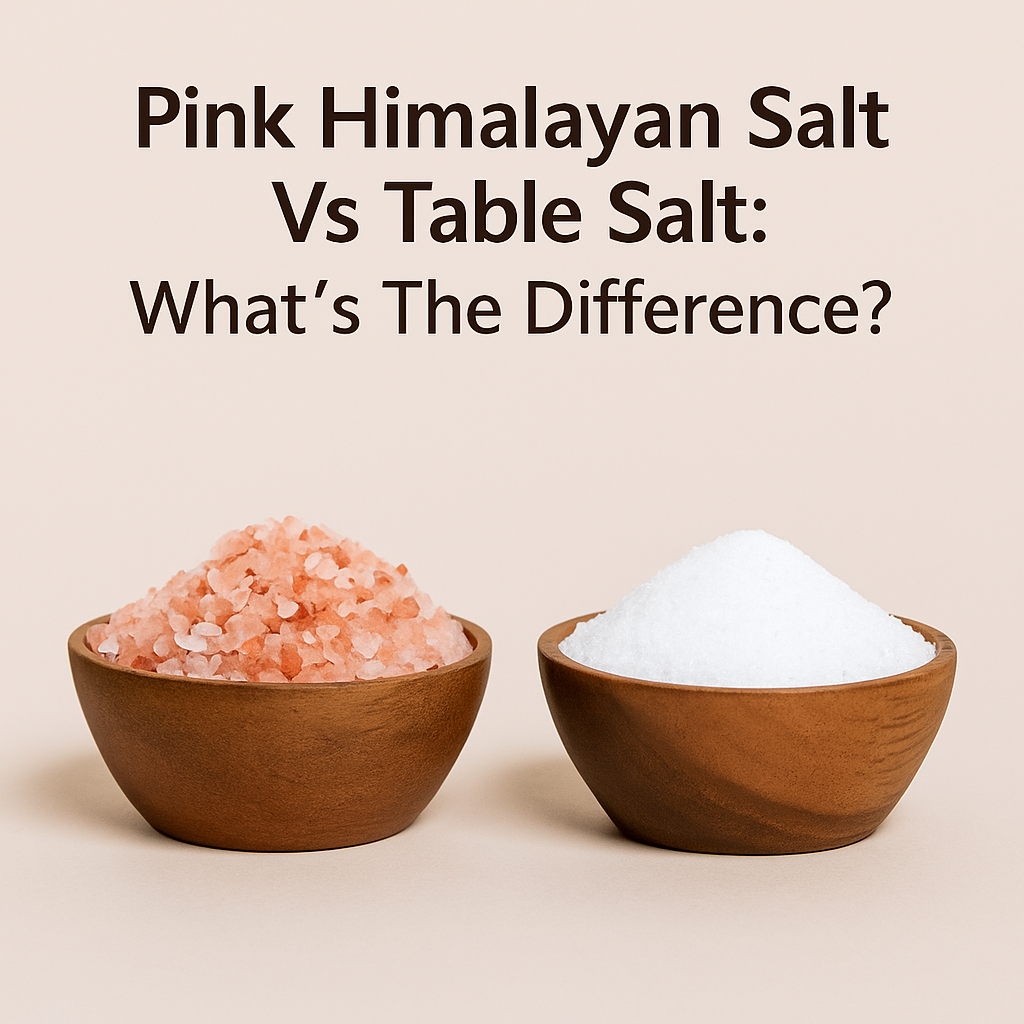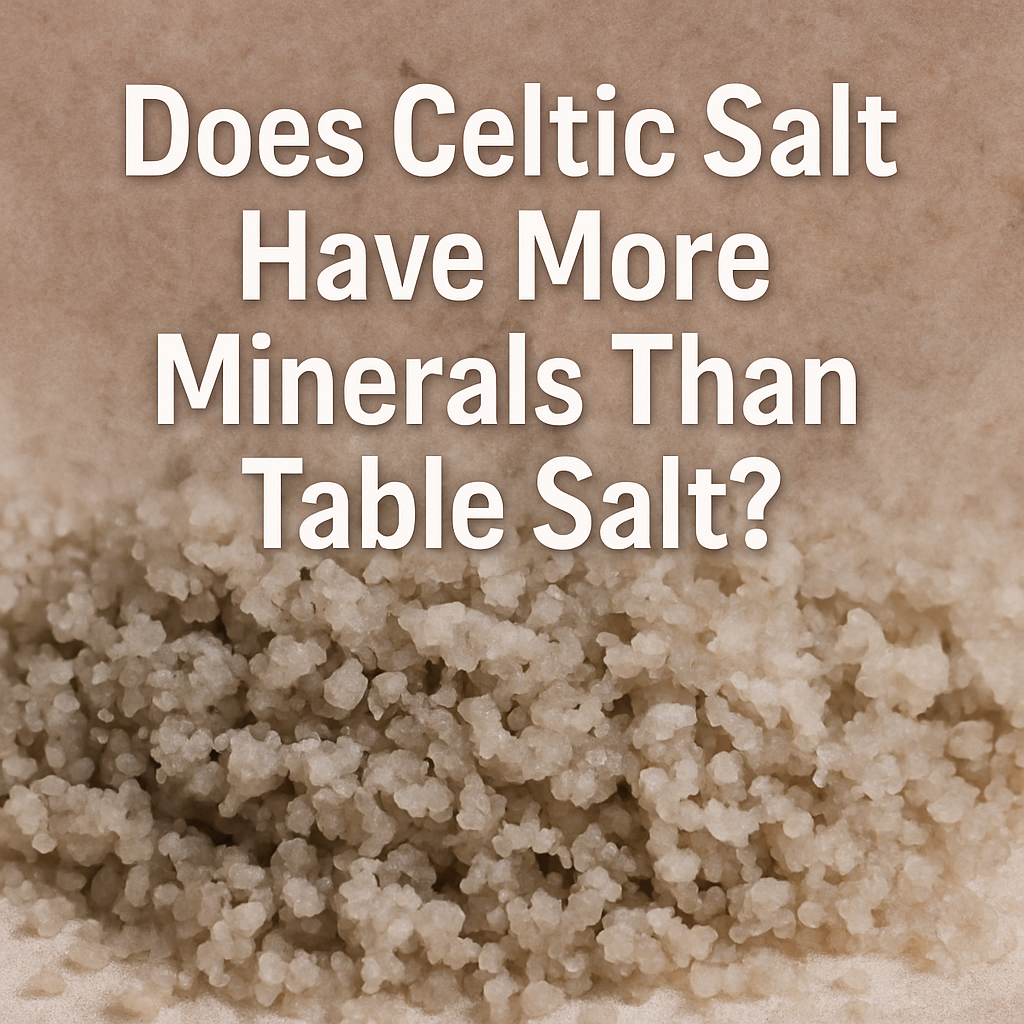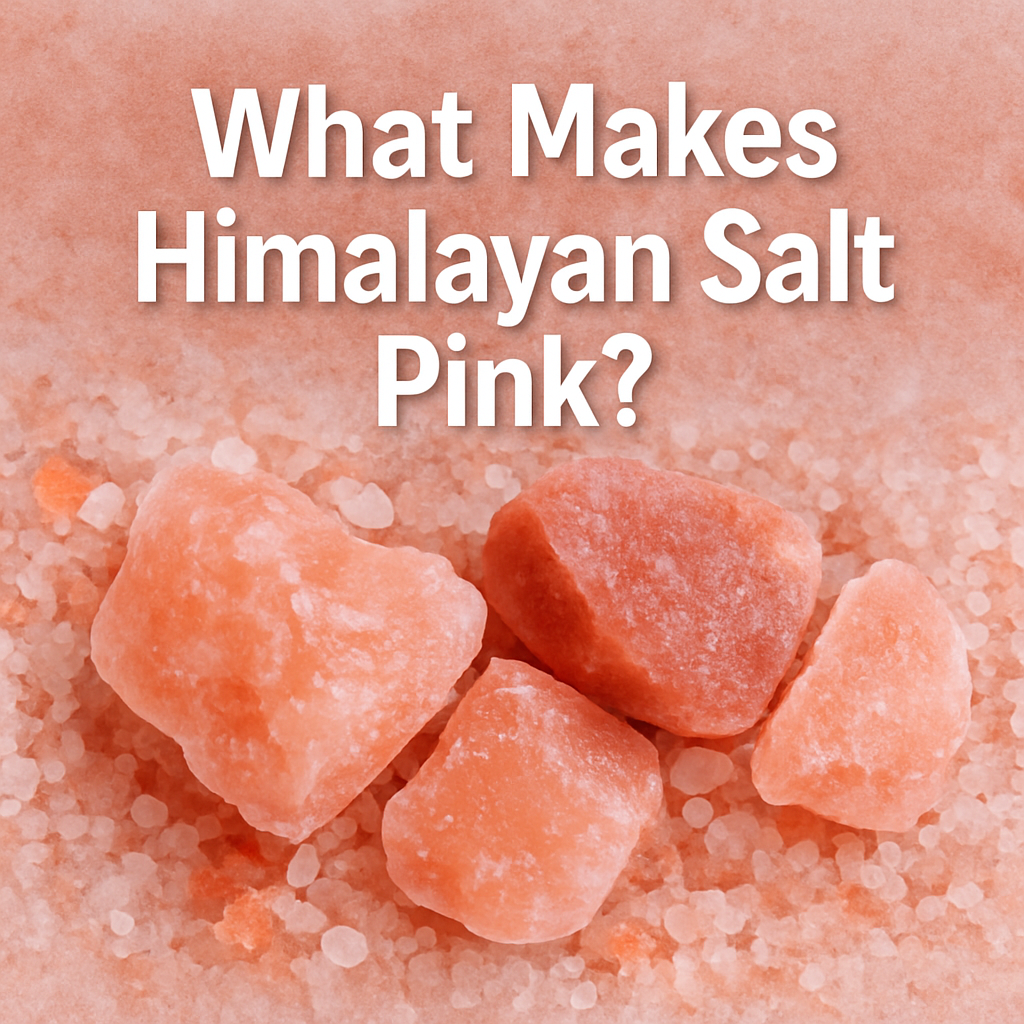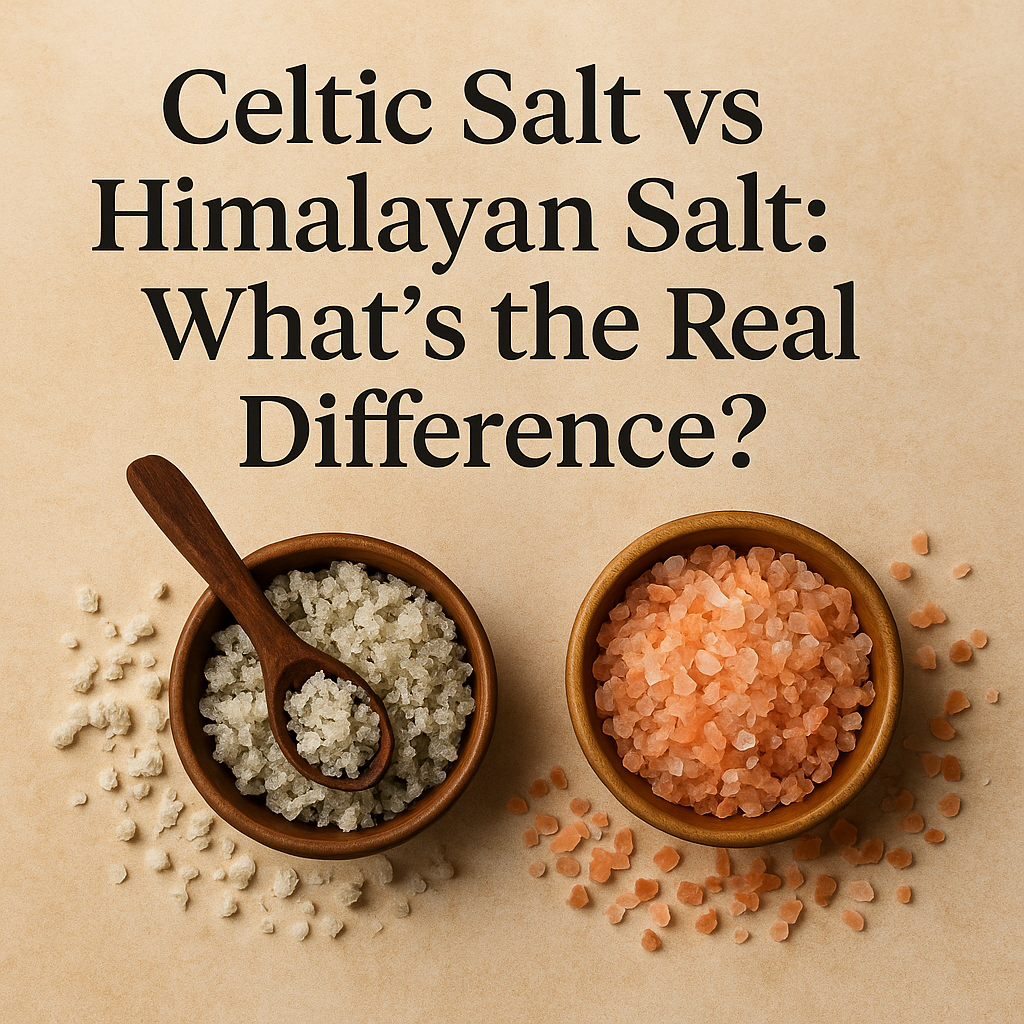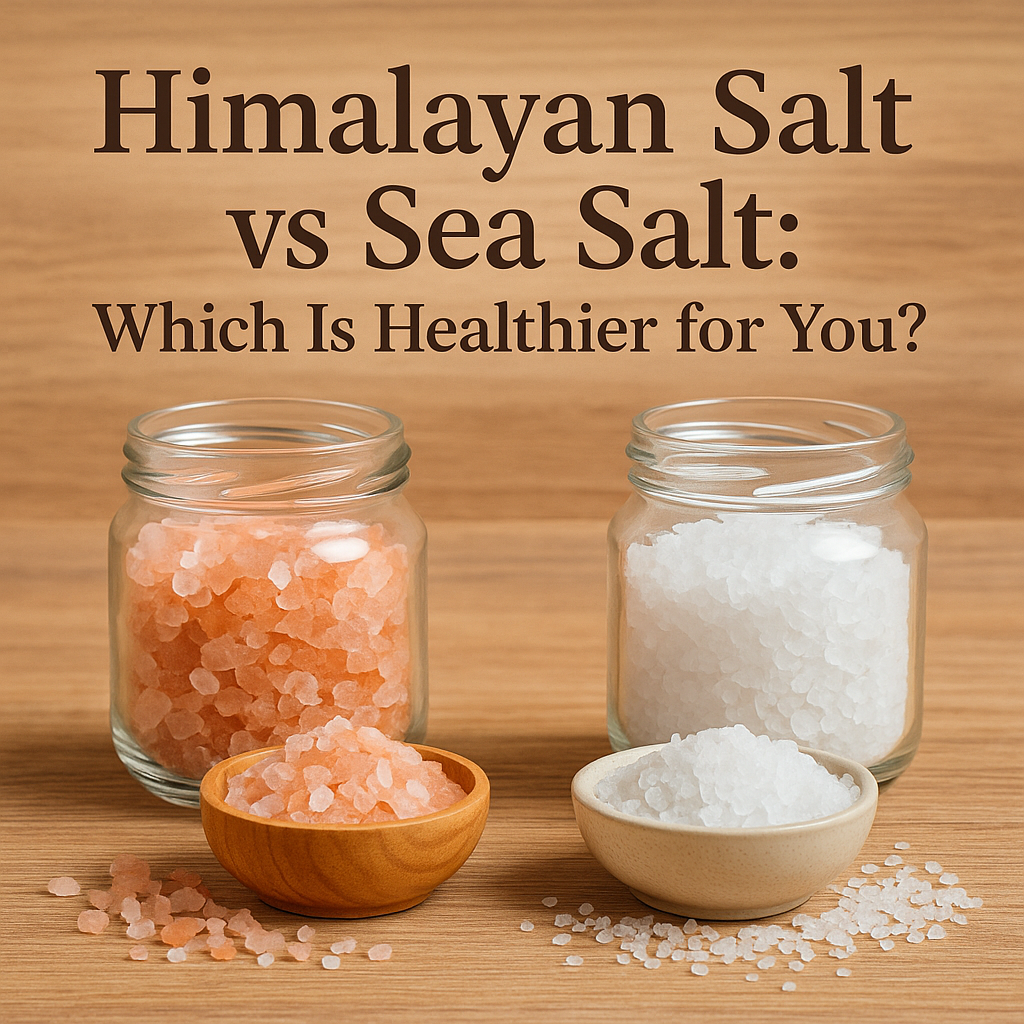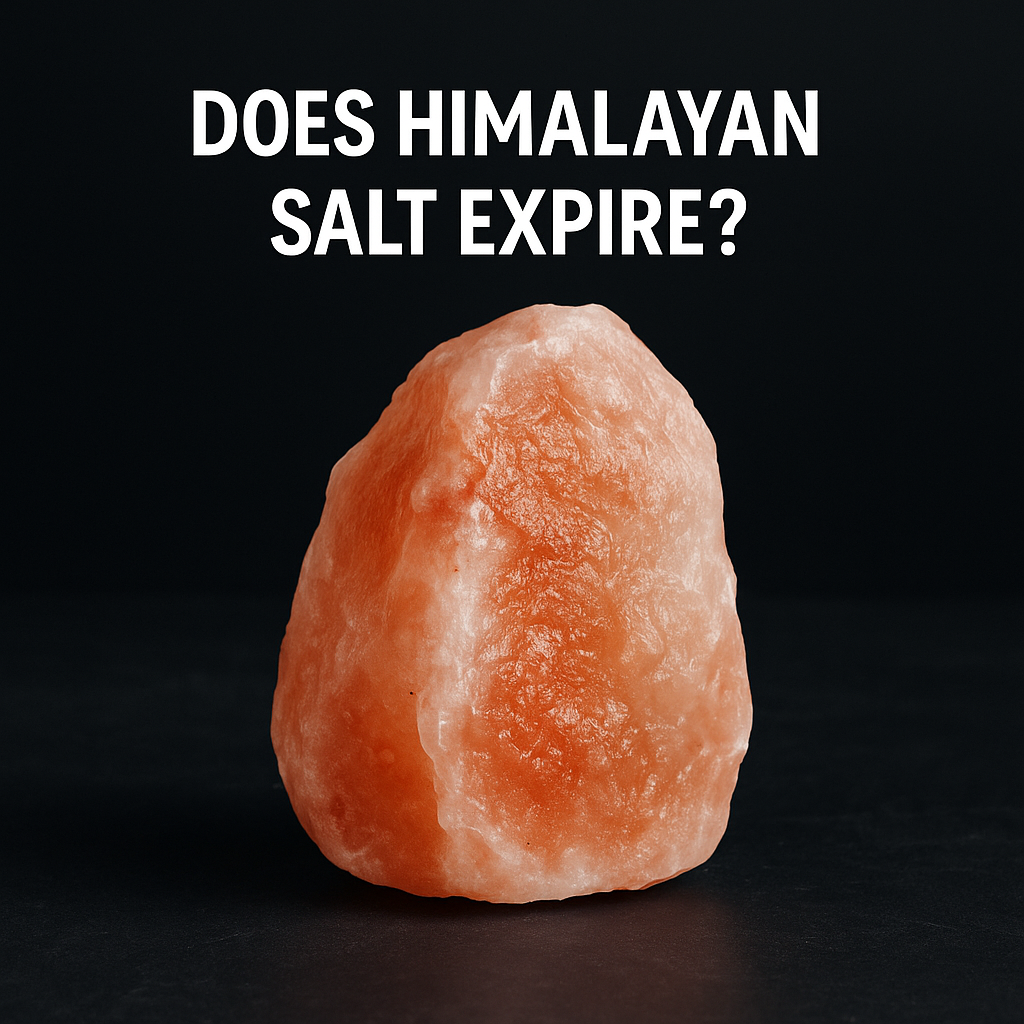Salt is one of the most significant elements in our life. It improves the flavor of food and is also mandatory for our body’s function. There are different types of salts available, but Pink Himalayan salt and Table Salt are the two most popular.
There are certain differences between Himalayan salt vs Table salt that are not known to all. If you want to make informed dietary and cooking decisions, you should know about these differences.
This detailed guide will discuss Himalayan salt vs Table salt, where they come from, their makeup, and more.

What Is Pink Himalayan Salt?
Origins and Formation
Pink Himalayan Salt originates from the Khewra Salt Mine in Pakistan. This is one of the oldest and largest salt mines in the world. The salt deposits in this area are over millions of years old and were formed from ancient sea beds. Over millions of years these salt deposits became trapped under the ground and were preserved. The salt is mined by hand and only lightly processed.
Why Is Himalayan Salt Pink?
The pink color of Himalayan salt is due to the presence of iron oxide. The iron in the salt reacts with the oxygen in the air to form iron oxide, which gives the salt its characteristic pink color.
Trace amounts of other minerals, such as calcium, magnesium, and potassium, are also present in Himalayan salt. These minerals give the salt its color and also provide some nutritional value.
What Is Table Salt?
Table Salt has been used as a food seasoning and preservative for thousands of years. Table salt is a form of salt and one of the most refined salts which is also commonly used in kitchens.

Production and Processing
Table salt is derived from underground salt deposits or from evaporated seawater. The crude salt is heavily refined to eliminate impurities and trace minerals.
Processing may also add various additives, such as anti-caking agents and iodine. Iodine is important in the function of the thyroid gland, which is the reason most countries have made iodine-addition to table salt compulsory.
Chemical Composition
Table salt is composed of 97-99% sodium chloride. Sodium chloride is used by the human body for fluid balance, nerve transmission, and muscle contraction.
Due to the refining process, table salt does not have any of the trace minerals of salts like Himalayan salt.
Pink Himalayan Salt Vs Table Salt: Key Differences
Mineral Content Comparison
|
Mineral / Component |
Himalayan Salt |
Table Salt |
|
Sodium Chloride |
~98% |
~100% |
|
Trace Minerals |
~2% (calcium, magnesium, potassium, iron) |
Minimal |
|
Processing |
Minimal |
Refined |
|
Nutritional Contribution |
Small amounts of essential minerals |
Provides standardized sodium and iodine |
Processing Methods
Himalayan salt is not refined very much. The salt is hand-mined, washed, and sometimes ground but not much else. Table salt on the other hand, is extremely refined. All of the impurities and trace minerals are removed. Anti-caking agents are added and iodine is fortified to prevent deficiency.
Sodium Content
The sodium content in both salts is fairly comparable. Himalayan salt has about 2,200 mg of sodium per teaspoon, whereas table salt has around 2,300 mg per teaspoon. Both offer adequate sodium to support the body's needs. However, regardless of salt type, excessive sodium intake should be managed.
Texture and Crystal Size
Himalayan salt is coarser in crystal size, so it is better for grilling, seasoning, and finishing. Table salt has fine, uniform granules that dissolve quickly and works well for baking and everyday cooking. The size can impact the texture and how salt blends with other ingredients in food.
Health Benefits and Claims Analysis
Proven Benefits to Health
Himalayan salt and table salt are both beneficial for providing the sodium required by the body for the functions of the nerves, hydration, and contractions of the muscles. Sodium consumption also regulates the blood pressure of an individual as well as for hydration. The electrolytes found in the salt are also essential to the health of the body.
Claims on Health
The claims of Himalayan salt and its health benefits have to do with the minerals in the salt, which are essential to the health of the body. Himalayan salt is believed to be able to provide hydration, and balance electrolytes as well as improve circulation. The minerals in the salt are present in very small quantities and have no replacement for other foods and diets to support nutrients for the body.
The iodine deficiency
Iodine is essential for preventing disorders in the thyroid gland. Table salt is iodised, which helps to maintain and support the health of the thyroid gland and preventing goiter. The World Health Organization (WHO) also suggests that iodine must be taken at regular intervals to ensure good thyroid health. Himalayan salt contains almost no iodine, which means when used alone, the body might be at a risk of being iodine deficient if it is not taken in the diet of an individual.
Blood Pressure and Health Effects
Salt and Hypertension Connection
The amount of sodium you take in will affect your blood pressure. Hypersensitive people to salt can have a problem with increased blood pressure as a result of excessive consumption of salt. The health agencies have advice the daily intake of sodium for an adult human to be about 2300 mg. Both Himalayan salt and table salt should be consumed in moderation if you want to control blood pressure and improve overall heart health.
Health Risks of Excess Salt
Too much salt can cause health problems no matter the type, from increasing risk of cardiovascular issues, less kidney performance, and high risk of stroke and heart attacks. The intake should be controlled for a healthy life.
Cooking and Culinary Uses
When to Use Pink Himalayan Salt
Use Himalayan salt as a finishing salt because of its texture and mild flavour. You can use it to grill foods or as a seasoning on meats. Salt blocks can be used to both cook with and serve food for presentation and flavour.
When to Use Table Salt
Use table salt for baking and other exact recipes. The smaller crystals of table salt dissolve and mix more easily. Table salt is also an inexpensive option for everyday cooking, and refined salt has its uses for consistency.
Flavour Differences
Himalayan salt has a slightly milder, more complex flavour than table salt. This is because of its mineral content and crystal structure. Table salt tastes saltier and more consistently salty. The size of the crystals also affects the release of flavour in food.
Environmental and Sustainability Factors
Mining Practices
Himalayan salt is extracted using traditional mining techniques that have a smaller environmental impact than industrial salt extraction methods. Sustainable mining practices in the Khewra Salt Mine ensure the long-term preservation of the natural resource.
Processing Environmental Impact
Table salt production includes energy-intensive refinement and chemical processing. The carbon footprint and environmental impact of table salt refinement are greater than that of lightly processed Himalayan salt. Opting for Himalayan salt can lead to a reduced environmental impact.
Which Salt Should You Choose?
When deciding between Himalayan salt and table salt, the difference isn’t very significant. Both taste similar and can be used in cooking. Pink Himalayan salt does contain slightly more minerals, so if you want the extra nutrients, it’s a better choice. However, for someone with low sodium, table salt is generally better. Himalayan salt is fine for flavour or regular cooking, but it’s not more ‘nutritious’ in a way that matters for sodium deficiency.
If you want to enjoy the benefits of natural minerals, explore the high-quality Pink Himalayan Salt available at Himalayan Salt Direct. It’s a simple way to bring better flavour and a bit of nutrition to your meals.

